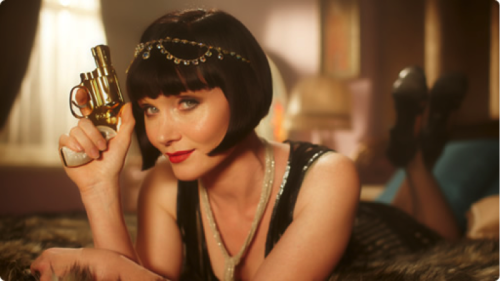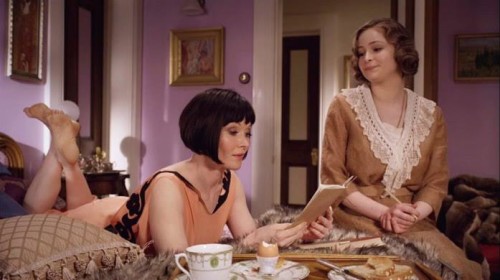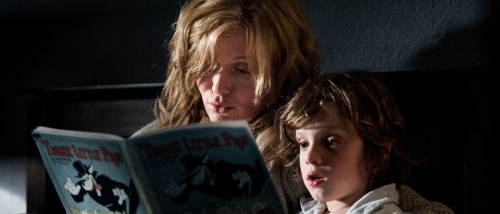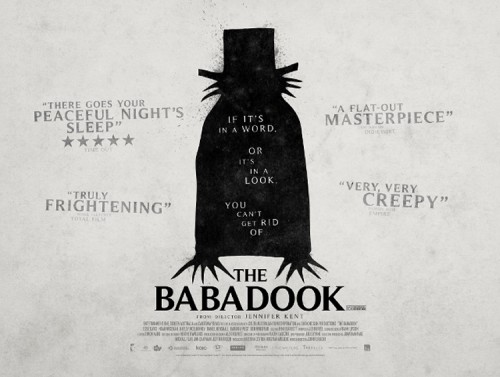This guest post by Emma Thomas appears as part of our theme week on Sex Positivity.
“My sin’s are too many and varied to repent. And frankly, I intend to continue sinning.” – Miss Phryne Fisher
Miss Fisher’s Murder Mysteries has been a popular show in Australia for years, and is based on a long-lasting series of books by Australian author Kerry Greenwood.
But, what did it take for American viewers to tune in? Why, slut-shaming, of course!
In a bizarre, but typically American, twist of fate, Netflix reviewers who bashed Miss Fisher’s Murder Mysteries by calling the lead character a “tramp,” a “tart,” and a “s!ut” (Netflix censors that one), made the show seem a hell of a lot more interesting. Jezebel writer Rebecca Rose and her readers definitely agreed.
A lady detective who loves sex? Yes, please.
From its very first episode, Miss Fisher’s Murder Mysteries is alive with sex positivity.
Indeed, the show’s treatment of sex is both blatant and tongue-in-cheek.
One needs only look at the main character’s name – Miss Phryne Fisher.
The original Phryne was a famous hetaera of Ancient Greece. She was, in other words, a high-class prostitute. And though her birth name was Mnesarete, which means to commensurate virtue, she was nicknamed “Phryne.” Which means toad.
The original Phryne was charged with impiety, and some say that when she was taken before the court she disrobed, baring her breasts to highlight her womanhood and arouse compassion. She was acquitted.
Still, the trial made Phyrne famous, and in ancient Greece, “Phryne” quickly caught on as a nickname for prostitutes and courtesans.
Thus, Miss Fisher bears the first name Phryne, and that alone serves as a hint of what is to come.
She is certainly not one to commensurate virtue.
However, despite what those Netflix reviewers believe, her name is also ironic – Miss Fisher is not a slut, or a tramp, or a tart.
Miss Phryne Fisher (Essie Davis) is a lady detective, who also happens to be sharp as a whip, with a shiny gold gun and a magnificent wardrobe to boot.
And, though it is 1920s Australia, she drives a car, flies planes, wears trousers, and sleeps with whomever strikes her fancy.
Her best friend, Dr. Mac, also happens to be a lesbian. Dr. Mac has plenty of (behind-the-scenes) sex of her own, and rarely has a problem finding a lover in the roaring ’20s.
It makes sense that Dr. Mac is such good friends with Phryne Fisher. As a character Phryne is many things, and one of those things is a woman who happens to love good sex–a woman who does not seek to hide her true self.
In a refreshing turn, the show doesn’t seek to hide this either, nor does it give excuses for it.
Take, for example, this exchange with Dr. Mac:
Dr. Mac: Looks like a nerve powder. Usually prescribed for women, of course, the hysterical sex, for nervous exhaustion, emotional collapse, wandering wombs…that sort of thing.
Miss Fisher: Why on earth would a womb wander?
Dr. Mac: Unnatural behavior will do it, according to Hypocrites. Like celibacy.
Miss Fisher: Oh good. Mine’s not going anywhere.
It’s a joke about sex but, television writers of America, it’s not in poor taste! And, once it’s said, the show simply moves on.
Besides occasional sex jokes, Miss Fisher’s Murder Mysteries features episodes about vibrators, abortion, and women’s rights. It also highlights a wealth of one-night stands, and while the men are attractive, the camera glances over the bodies of Miss Fisher’s lovers as lovingly as it does her gorgeous outfits. It is, in an odd way, the perfect combination of the male and female gaze.
While the show does feature Miss Fisher having a great deal of sex that, alone, does not make it sex positive. Sex positivity is not about having a lot of sex but instead focuses on removing the stigma and shame from sexual choices.
Miss Fisher just happens to want to have sex: that is her sexual choice.
In the very first episode, Phyrne has a sexual relationship with a dancer, Sasha de Lisse, and she later jokes that it was helpful for the investigation:
Miss Fisher: She pointed the finger at Sasha de Lisse, and I was forced to discount him with my own thorough investigation.
However, it’s clear to the viewer that is not the reality of the situation – Phryne had sex with Sasha because she wanted to.
You may wonder…if Miss Fisher has casual sexual relationships, how do the writers show the depth of her character? So often in American television, we rely on our lead actress’ relationship with a man, or potential relationship with a man, as a central plot device. This is particularly common in crime procedurals. Case in point: Castle, Bones, and Scandal.
In an interesting twist, there is a leading man in Miss Fisher’s Murder Mysteries: Detective Inspector Jack Robinson (Nathan Page). Yet, unlike Castle and Bones and a plethora of other shows, this time the male lead, Jack, is the emotionally reserved one. And, in many ways, Miss Fisher is key to his character’s development.
Without giving too much away, as the series progresses Miss Fisher’s love of life and, dare I say it, sex, leads Jack to ponder new possibilities.
In one instance Phryne, like her namesake, bares her breasts (season 2, episode 1) while performing an undercover fan dance (of course).
Yet, even in this instance her behavior is not frowned upon. Maybe her Catholic maid should be scandalized, but instead she simply sighs, while Jack – now accustomed to Phryne’s personality – smirks. Perhaps the closest one gets in 1920s Australia to rolling one’s eyes.
There is a will-they-won’t-they in Phryne and Jack’s friendship that is evident from the very beginning of the series.
But Miss Fisher never pines. It is clear that she loves sex for sex, and while a relationship with Jack may be somewhere on the horizon, well, she’s not going to be celibate in the meantime.
Some viewers cannot believe that Phryne could flirt with Jack, and truly be interested in him, yet continue to sleep with other men. Certainly, this is not an idea that is commonly shown on television.
But if sex positivity is the idea of informed consent and agency within one’s own sexuality, Phyrne’s relationship with Jack is a prime example of it.
Phyrne is making her own decisions about her own body, and only she can judge what is right for her.
In fact, there is one particular scene from the second season that proves a perfect thesis. Jack and Phryne sit down at a piano, and sing the classic Cole Porter song, “Let’s Misbehave.”
They both know they’re going against societal norms, but neither seems terribly concerned about it.
Jack knows that Phryne sleeps with other men, and she never tries to hide that from him. And while he may not be thrilled, he doesn’t try to stop her. He’s not ready for a relationship with her, so what right does he have to stop her from doing what she pleases?
Through the first three seasons, Phryne sleeps with numerous men. Her sexual conquests, and I’m using that term because I am quite sure that’s how Miss Fisher herself would see them, circumvent race and age.
In Miss Fisher’s Murder Mysteries sex can be serious, and have consequences (and sometimes lead to murder), but it is also often humorous. In one such scene, Phryne attempts to have sex with a boxer – who’s overly focused on proving how strong he is via push-ups (season 2, episode 4). Miss Fisher’s quite disappointed he won’t just come to bed already.
Miss Fisher: Why don’t you show me here? On the bed?
One of Miss Fisher’s most fleshed out sexual relationships occurs with a Chinese-Australian man, Lin Chung.
While they also socialize, eating meals together and walking through the streets of Melbourne, the purpose of their meetings is clearly sexual in nature.
When Phryne learns that Chung will be entering into an arranged marriage, she continues to sleep with him, but she also stresses that once he has met his bride their sexual relationship will end.
Yes, Phryne has a healthy sex drive and morals – an unusual combination in television.
In an interesting twist, Phryne ultimately helps facilitate the arranged marriage.
And, despite what American television writers may have conditioned us to expect, Phryne does not become a petty, jealous woman. She does not seek to destroy Chung’s relationship and win him back, nor does she feel disrespected.
Miss Fisher is a woman who knows what she wants – who made an educated choice.
Plus, there are other fish in the sea – the boxer, the old friend, the circus performer – after a while the murders do get a tad…outrageous. But the sex stays good.
Emma Thomas is a freelance writer, media development associate, and independent producer. Her musings can be found on Twitter (@EmmaGThomas) and her blog, while her newest film projects can be found at Two Minnow Films.


























